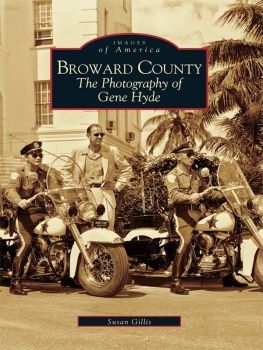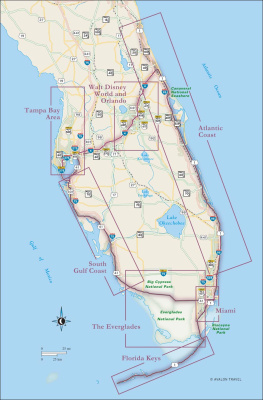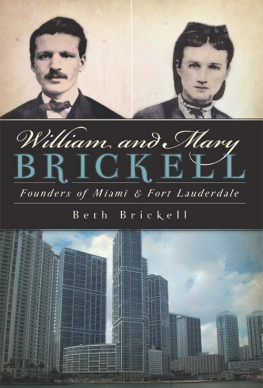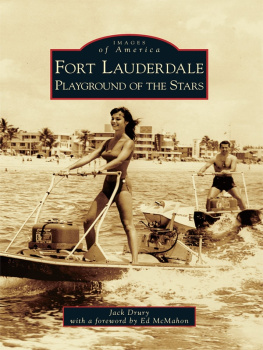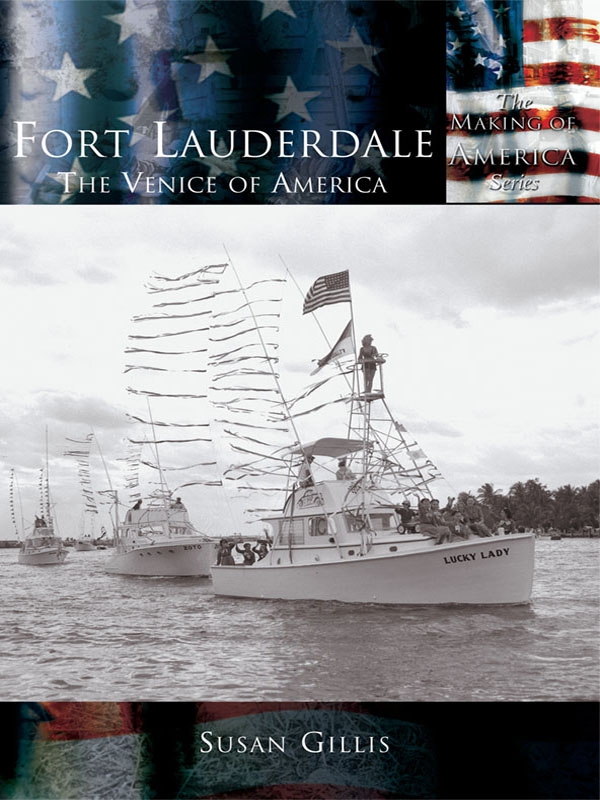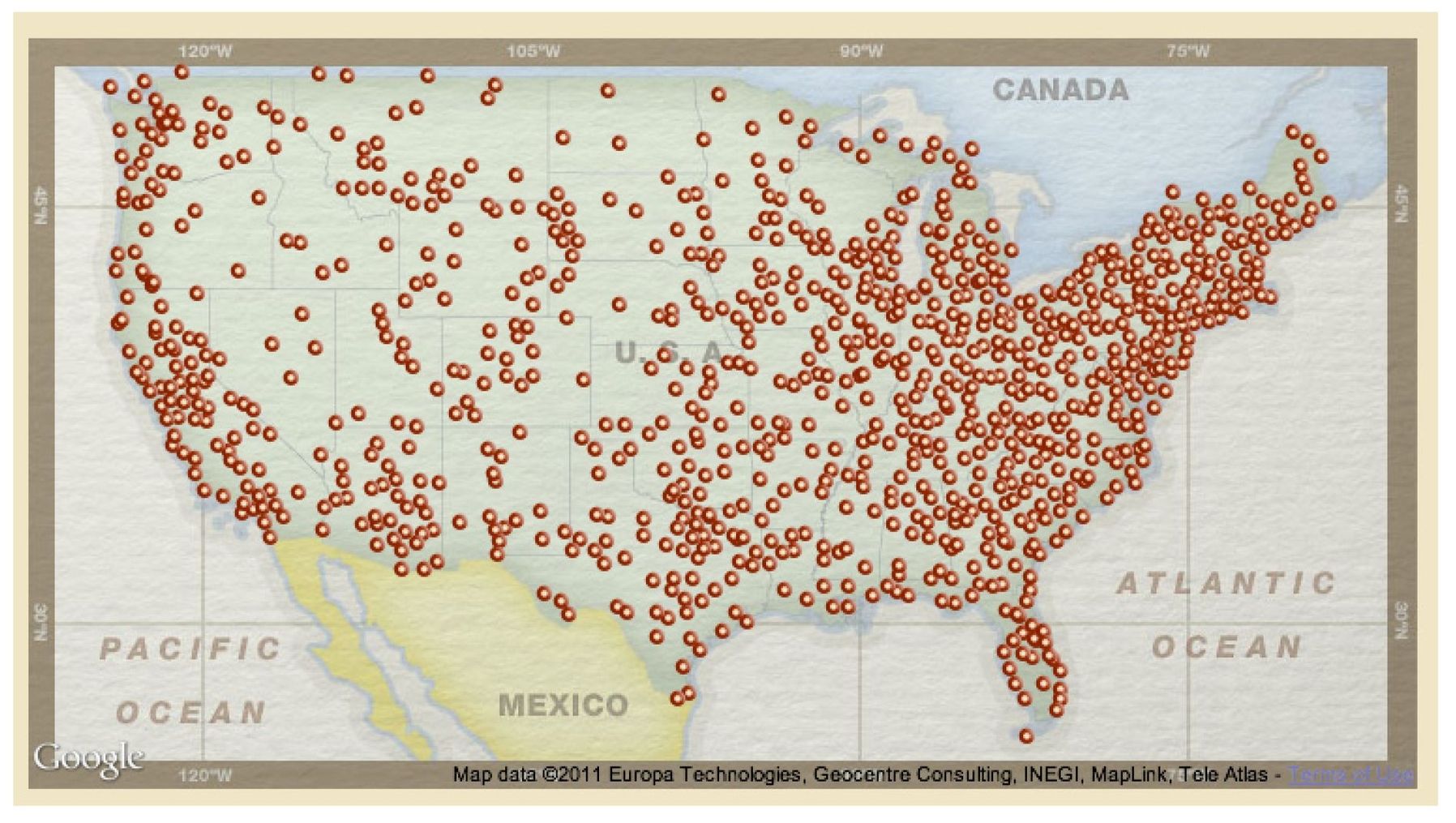Chapter One
MYSTERIOUS NEW RIVER: PREHISTORIC TIMES TO THE 1890s
Visitors as well as longtime residents of Fort Lauderdale often express their disdain for the supposed brevity of our citys history. However, archaeological evidence shows that people have inhabited South Florida for possibly as long as 12,000 years, and the earliest evidence of human occupation in Fort Lauderdales county, Broward, dates to nearly 5,000 years ago. These real natives efficiently exploited an unusually rich environment by hunting, fishing, and gathering plant foods in both coastal and inland sites. Lacking appropriate stone for tool-making, they made creative use of bone, shell, and wood to create a distinctive artifact assemblage. Between 1500 and 500 B.C.E., they adapted the use of pottery, even though the closest clay sources were in the northern part of the state.
The descendants of these people were known by the Spanish explorers as the Tequesta Indians. They lived throughout southeast Florida, approximately from todays Palm Beach Countys southern limits south to southern Dade County. The Tequesta continued the basic lifestyle of their ancestors with the absorption of some European items into their culture. All the native inhabitants of Florida suffered a decline after European colonization; their numbers fell dramatically due to disease and raids from encroaching tribes from the north. By 1763 Great Britain took possession of Florida, and virtually all of South Floridas aboriginal inhabitants had died or left with the Spanish.
The Tequesta relied on a major transportation artery around which the modern community of Fort Lauderdale has grown: the New River. New River was a clear, deep, short waterway, approximately eight miles long from its mouth and formed from runoff from the nearby Everglades. Before the Everglades drainage program began, strong whirlpools, tied by subterranean passages to springs in the Atlantic, were located at several spots in the river. In fact, visitors accounted that New River was bottomless in certain areas. The river forks a few miles inland, the south fork being the larger and more developed of the two. New River in its pristine state was a place of oftreported beauty with cypress-lined banks and roiling tarpon that came with the incoming tide. It was home to alligators, tropical birds, and water moccasins indigenous to the nearby Everglades.
The origin of New Rivers name is uncertain; local legend once held that it appeared overnightan event witnessed by Seminole Indiansbut New River is a mature system that developed after the formation of the Everglades, approximately 5,000 years ago. The pioneers who repeated this tale did not realize that the Seminole Indians themselves were relative newcomers to the area, occupying sites in todays Broward County only as recently as the early nineteenth century. Identified under names such as Rio Salado in the sixteenth century, the earliest known documentation of New River is the America Septemtrionalis map of 1631. The maps notations are in Latin and New River is labeled R. Novo . It is possible that the well-documented shifting inlet, which has moved three times in the historic period, led to the name New River Inlet, hence New River.
Although there is archaeological evidence to support a possible Spanish landing on the beach near present-day Fort Lauderdale around 1500 C.E., by the end of the eighteenth century the area surrounding Fort Lauderdale was bereft of human inhabitants. The last of the Tequesta had departed the area and the Seminole Indians had yet to find their way so far into South Florida. By 1783 Spain had regained possession of Florida. However, her authority was threatened by characters such as William Augustus Bowles, a British-American adventurer who planned to establish an Indian nation of Creeks and Cherokees, which threatened the Spanish government with Indian invasion. The governor of Spanish East Florida, Juan Nepomuceno de Quesada, sent the schooner Juan Nepomuceno from St. Augustine to New River in February 1793 to investigate some of Bowless alleged Bahamian supporters. The record of this mission, translated into English by interpreter John Hambly, is the earliest written documentation of settlement in the region.
The crew of the Nepomuceno sailed up New River Sound into New River from the inlet, then located south of todays Port Everglades. Eight miles upriver they encountered Captain Joseph Robbins, a known Bowles associate, living on the river with his mulatto wife Rachel (the first person of African descent to live in the area), their daughter, and an American. The investigative team visited the house and plantation of Surles (aka Charles) and Frankee Lewis and their family two miles to the west. The family was absent on a trading expedition to Nassau, but Hambly described their homestead: a house on a pine bluff on the south side of New River with a fowl house and blacksmiths shop. Later visitors to the region documented limes, oranges, lemons, sugar apples, coconuts, and guavas growing on their land. None of these plants are natives, and the Lewises were a likely source for the introduction of these species to the Fort Lauderdale area. Surless widow Frankee, son Jonathon, and daughter-in-law Polly were granted land donations by the U.S. government in 1824 based on their occupation of the land prior to the cession of Florida. The Frankee Lewis Donation occupied the site of what is today the 640 acres straddling the New River east of Federal Highway (U.S. 1).


